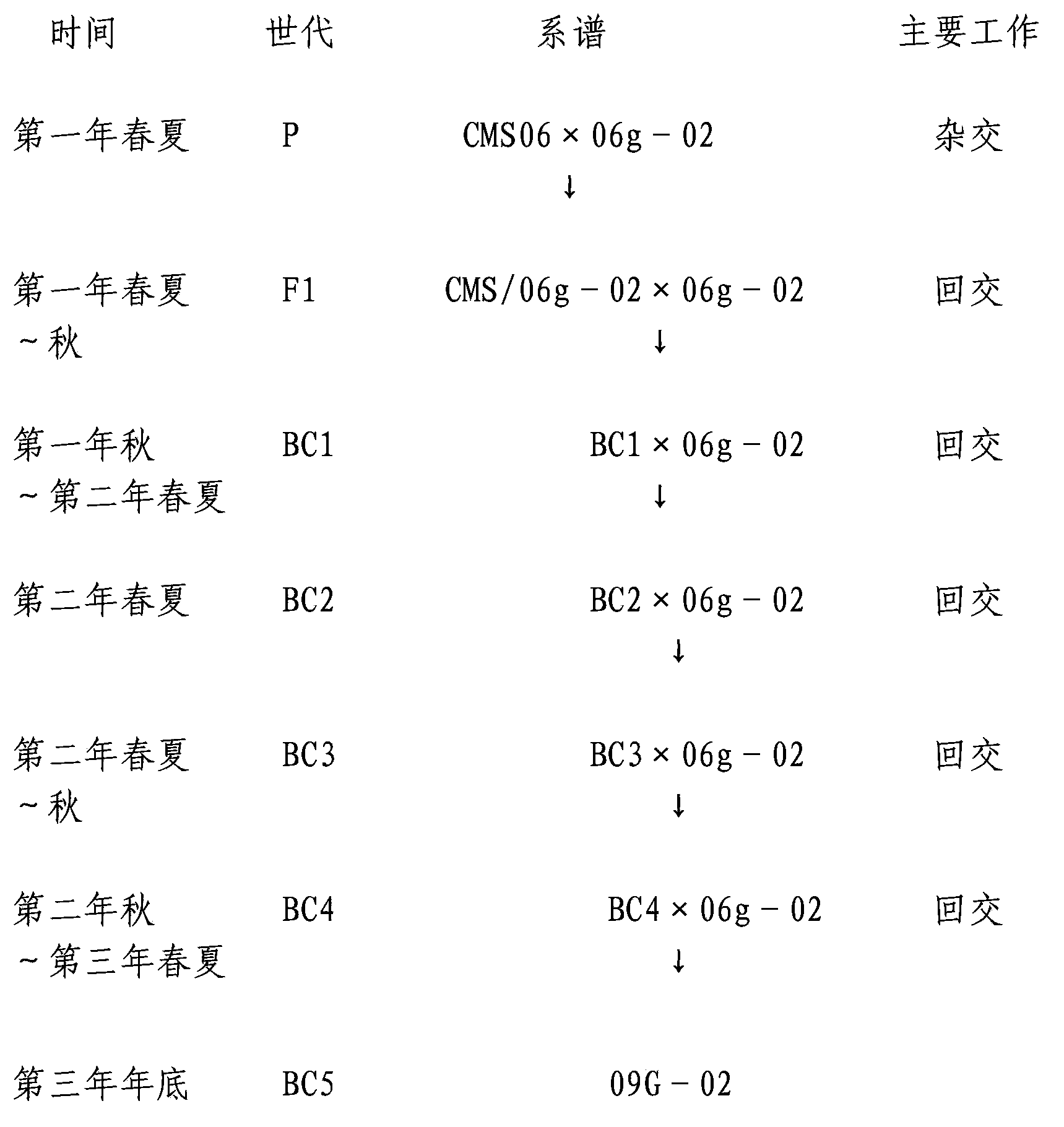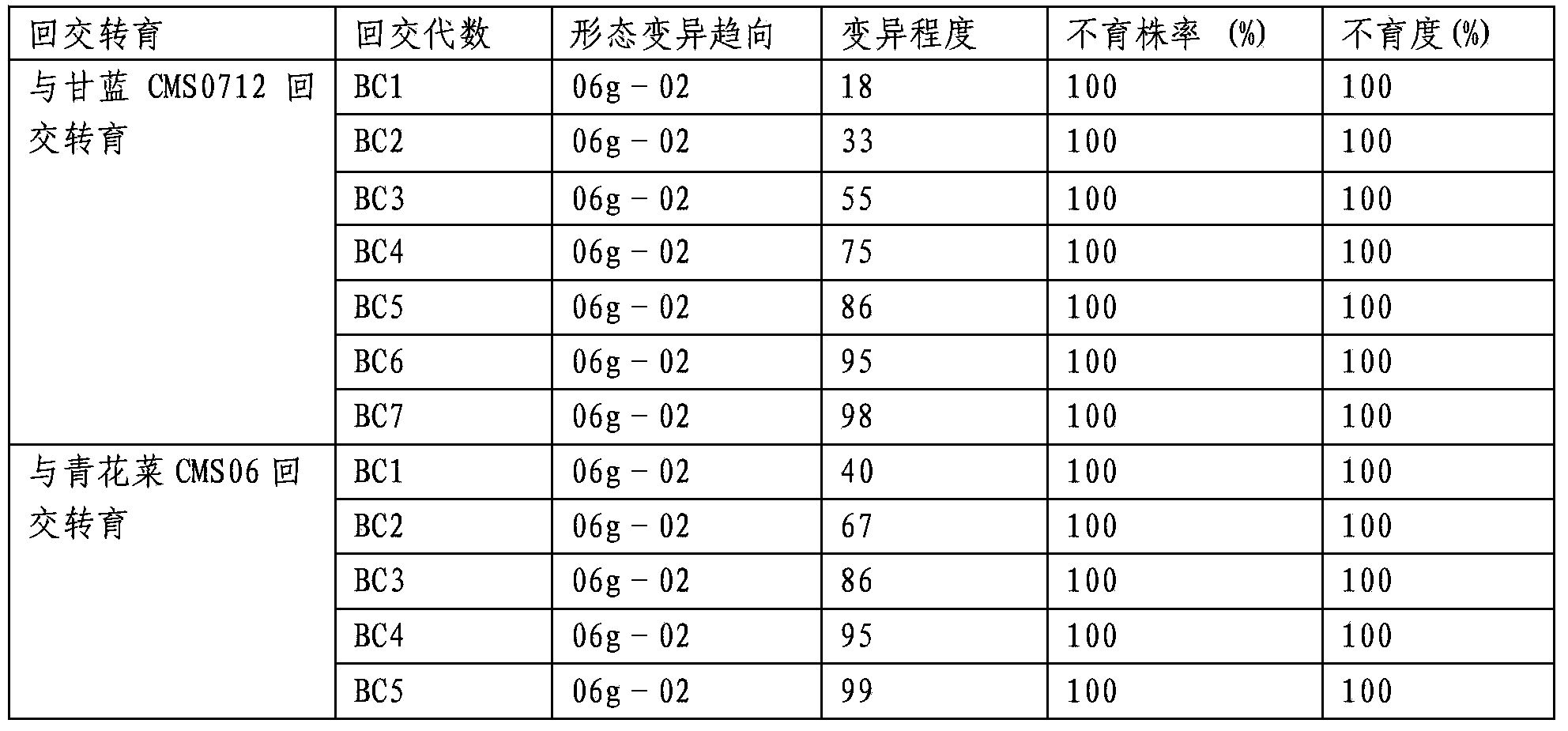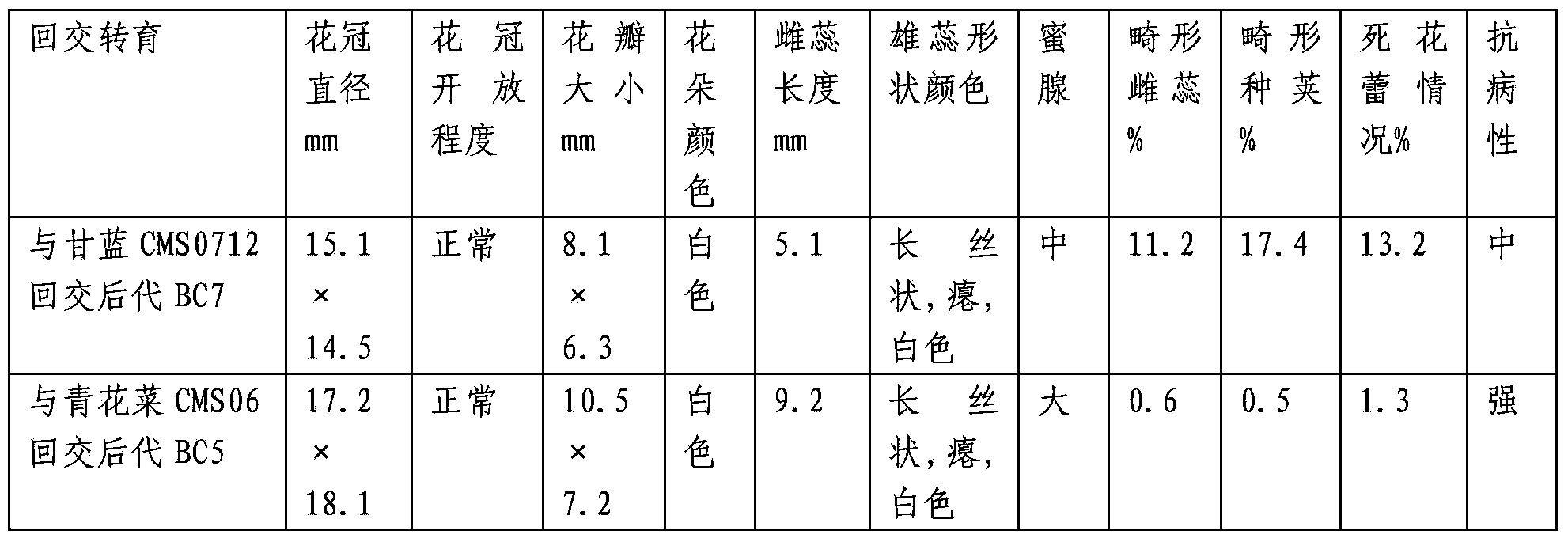Method for transforming sterile line of Chinese kale by utilizing vernalization and generation adding
A male sterile line and kale technology, which is applied in the field of plant cultivation, can solve the problems of poor flowering and fruit-bearing traits, small flower organs of kale, and difficulty in maintaining sterility, so as to avoid degeneration of vitality and loss of excellent traits, The effect of speeding up the breeding process and maintaining sterility
- Summary
- Abstract
- Description
- Claims
- Application Information
AI Technical Summary
Problems solved by technology
Method used
Image
Examples
Embodiment 1
[0026] In the first spring (early April) of this example, CMS06 (purchased from Zhenjiang Ruifan Agronomy Co., Ltd.) was used as the female parent, and 06g-02 (purchased from Zhenjiang Ruifan Agronomy Co., Ltd.) was used as the male parent for crossing to obtain Hybrid F1 (CMS / 06g-02), and 06g-02 selfed at the same time. In the summer (late June) of that year, the hybrid F1 (CMS / 06g-02) and 06g-02 self-bred seeds were sown in 72-hole hole trays, and the seedlings were raised in special nutrient soil for vegetables. After CMS / 06g-02 (or 06g-02 ) When the plant has 4-5 leaves, place it in a light incubator with a temperature of 4.4-8.6°C and an illumination of 2000XL for vernalization treatment for 10 days. After vernalization, plant the plant in a flowerpot and place it in a greenhouse For growth, the temperature in the greenhouse should be controlled below 28°C. If the temperature is high, water curtains and shading nets should be used to adjust the temperature to facilitate t...
Embodiment 2
[0029] The difference between this example and Example 1 is that CMS06 is used as the female parent and 06g-02 is used as the male parent to perform hybridization to obtain a hybrid, and then 06g-02 is used as the recurrent parent to carry out 3 generations of backcrossing with the hybrid The kale cytoplasmic male sterile line 09G-02 was obtained. The sterility and sterile plant rate of the 09G-02 line were both 100%. Petals, pistils, and seed pods developed normally. excellent.
Embodiment 3
[0031] The difference between this example and Example 1 is that CMS06 is used as the female parent and 06g-02 is used as the male parent to perform hybridization to obtain hybrids, and then 06g-02 is used as the recurrent parent to carry out 4 generations of backcrossing with the hybrids The kale cytoplasmic male sterile line 09G-02 was obtained.
PUM
 Login to View More
Login to View More Abstract
Description
Claims
Application Information
 Login to View More
Login to View More - R&D
- Intellectual Property
- Life Sciences
- Materials
- Tech Scout
- Unparalleled Data Quality
- Higher Quality Content
- 60% Fewer Hallucinations
Browse by: Latest US Patents, China's latest patents, Technical Efficacy Thesaurus, Application Domain, Technology Topic, Popular Technical Reports.
© 2025 PatSnap. All rights reserved.Legal|Privacy policy|Modern Slavery Act Transparency Statement|Sitemap|About US| Contact US: help@patsnap.com



